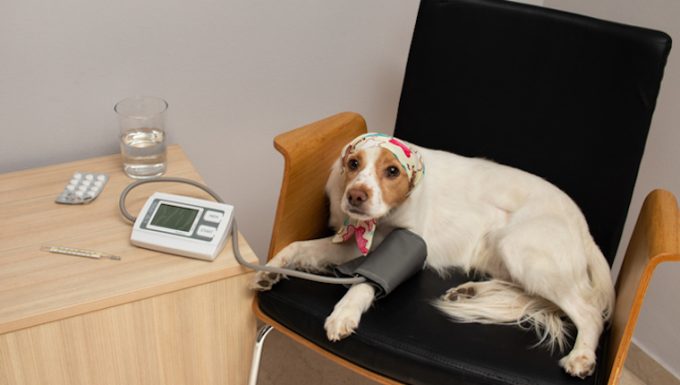Portal hypertension in dogs is a form of high blood pressure. The condition involves a large vein that links the liver to the intestine.
The condition can result in fluid building up in the abdomen. Additionally, seizures can happen.
Technically, the condition is also known as high blood pressure in the portal vein to the liver in dogs.
Also, note that the condition is different to pulmonary hypertension and systemic hypertension. Those are different types of high blood pressure.
If you see the signs of portal hypertension in your dog, then get to a veterinarian for a proper diagnosis and treatment.
Here’s what you should know about the symptoms, causes, and treatments for the condition.
Symptoms of Portal Hypertension in Dogs
The condition produces a range of symptoms. For example, some of the most common symptoms include:
- Jaundice
- Coughing
- Breathing problems
- Shying away from exercise
- Abdominal distention
- Loss of appetite
- Diarrhea (with blood)
- Seizure
Causes of Portal Hypertension in Dogs

The cause of the condition can be one of a number of things. For example, some of the most common causes include:
- Hepatic fibrosis
- Cirrhosis
- Pancreatitis
- Blood clot (of the lungs)
- Heartworm
- Peritonitis
- Blood vessels constricted
- Bile ducts blocked
- Heart disease
Additionally, some breeds of dog can be born with the condition. Those breeds include:
- Rottweilers
- Cocker Spaniels
- German Shepherds
- Doberman Pinschers
- Dalmatians
Treatments for Portal Hypertension in Dogs
Firstly, your vet will ask about your dog’s symptoms. Secondly, your vet will ask about your dog’s full medical history. This will include breed-specific issues.
Thirdly, blood and urine tests will be taken. Additionally, your dog’s abdominal fluid will be taken and tested.
Ultimately, imaging techniques can confirm the condition. For example, your dog may receive an X-ray, ultrasound, or echocardiogram.
Generally, treatment involves a spell in hospital. This is so your dog can receive fluid therapy. Additionally, surgery can be needed — but it will depend on the underlying cause of the condition. Your vet will talk you through the options.
While recovering at home, your will need to provide your dog with a quiet and calm environment. Also, diet changes and exercise restrictions will be needed. Your vet will formulate a safe plan for your dog’s needs.
Have you ever cared for a dog who suffered from this condition? How did your vet help your dog recover? Let us know in the comments section below.








